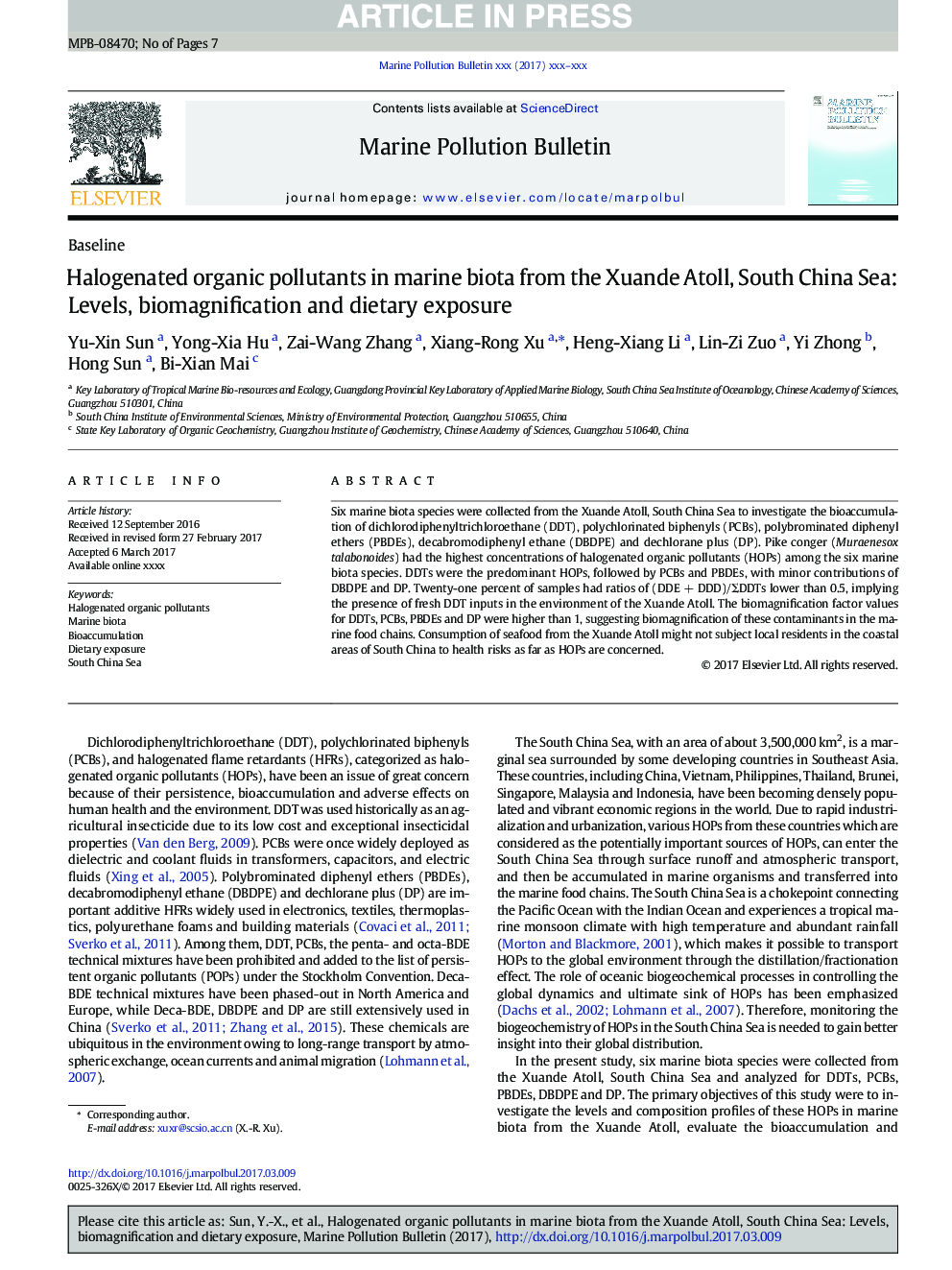| Article ID | Journal | Published Year | Pages | File Type |
|---|---|---|---|---|
| 5757391 | Marine Pollution Bulletin | 2017 | 7 Pages |
Abstract
Six marine biota species were collected from the Xuande Atoll, South China Sea to investigate the bioaccumulation of dichlorodiphenyltrichloroethane (DDT), polychlorinated biphenyls (PCBs), polybrominated diphenyl ethers (PBDEs), decabromodiphenyl ethane (DBDPE) and dechlorane plus (DP). Pike conger (Muraenesox talabonoides) had the highest concentrations of halogenated organic pollutants (HOPs) among the six marine biota species. DDTs were the predominant HOPs, followed by PCBs and PBDEs, with minor contributions of DBDPE and DP. Twenty-one percent of samples had ratios of (DDE + DDD)/ΣDDTs lower than 0.5, implying the presence of fresh DDT inputs in the environment of the Xuande Atoll. The biomagnification factor values for DDTs, PCBs, PBDEs and DP were higher than 1, suggesting biomagnification of these contaminants in the marine food chains. Consumption of seafood from the Xuande Atoll might not subject local residents in the coastal areas of South China to health risks as far as HOPs are concerned.
Related Topics
Physical Sciences and Engineering
Earth and Planetary Sciences
Oceanography
Authors
Yu-Xin Sun, Yong-Xia Hu, Zai-Wang Zhang, Xiang-Rong Xu, Heng-Xiang Li, Lin-Zi Zuo, Yi Zhong, Hong Sun, Bi-Xian Mai,
